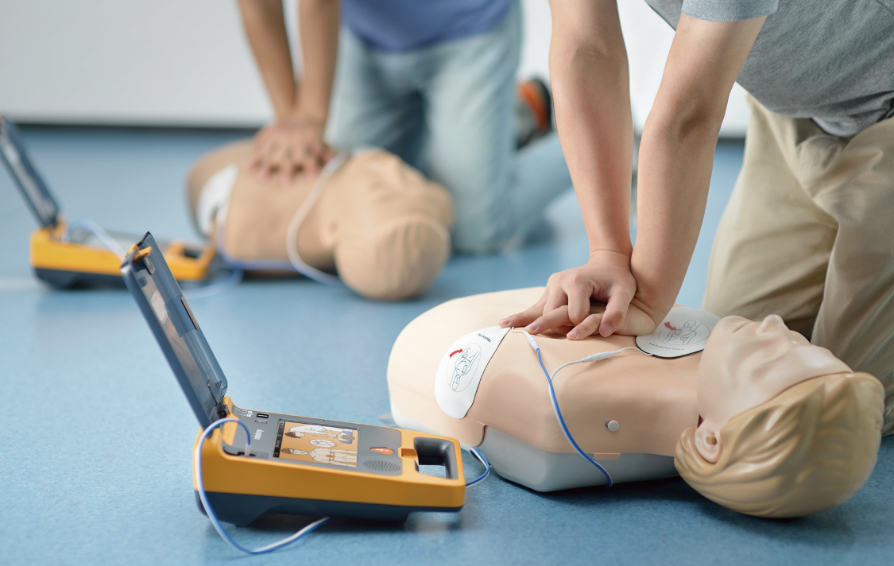Acting in the Moment: Special Considerations When Using an AED
In the face of a sudden cardiac arrest, an Automated External Defibrillator (AED) can be a lifesaver. These portable devices deliver a controlled electrical shock to potentially restart a person’s heart. While AEDs are designed for ease of use, certain situations require special considerations to ensure their safe and effective application. This comprehensive guide explores these special considerations and equips you with the knowledge to act confidently in an emergency.
Understanding AEDs: A Powerful Tool for Cardiac Arrest
A cardiac arrest occurs when the heart malfunctions and stops pumping blood effectively. Without immediate intervention, the person will lose consciousness and vital organs will begin to shut down. An AED can analyze the heart rhythm and, if appropriate, deliver a shock to potentially restore a normal rhythm.
AEDs are designed to be user-friendly, even for those with no prior medical experience. When activated, the device provides clear voice instructions guiding the user through the process of applying the electrode pads and delivering the shock.
Special Considerations: Using an AED Effectively
While AEDs are user-friendly, here are some crucial factors to remember in specific situations:
-
Wet or Sweaty Skin: Water conducts electricity, so ensure the person’s chest is dry before applying the AED pads. If they are wet, carefully remove any excess moisture with a dry towel.
-
Hairy Chest: Excessive chest hair can impede proper contact between the electrode pads and the skin. If necessary, use a razor (hopefully available in the AED kit) to remove some hair around the designated placement areas. Alternatively, press the pads firmly against the skin to ensure a good connection.
-
Pacemakers or Implantable Defibrillators: If the person has a visible pacemaker or implantable defibrillator (ICD), avoid placing the pads directly over the device. Most AEDs will provide specific instructions for pad placement in such cases. If unsure, prioritize checking for a pulse and starting CPR.
-
Medication Patches: Certain medication patches might interfere with AED pad placement. If visible, carefully remove them following the manufacturer’s instructions before applying the AED pads.
-
Children: While AEDs can be used on children, some models have specific pediatric pads or require a different activation process. If a child requires AED assistance, look for a pediatric AED or follow the specific instructions on the device you’re using.
-
Metal Surfaces: While AEDs are generally safe to use near metal surfaces, it’s recommended to move the person away from large metal objects if possible, just to be cautious and avoid any potential interference.
Safety First: Ensuring a Safe Environment
Before using an AED, ensure the scene is safe for both yourself and the person in need:
- Check for Unconsciousness: Gently shake the person’s shoulders and shout to see if they respond.
- Look for Breathing: Place your cheek near their mouth and nose to feel for breaths.
- Call for Help: If the person is unconscious and not breathing normally, immediately call emergency services.
Once the scene is safe, proceed with using the AED following the device’s clear instructions.
Beyond the Shock: The Importance of CPR
While an AED can potentially restart the heart, it’s crucial to initiate CPR (cardiopulmonary resuscitation) immediately after checking for a pulse and breathing. CPR helps circulate blood throughout the body until medical professionals arrive. The combination of CPR and AED use significantly increases the chances of survival for someone experiencing cardiac arrest.
Remember: Even if you are not trained in CPR, some AEDs will provide instructions for chest compressions. Any attempt to keep blood circulating is better than no action at all.
The Power of Knowledge: Preparing for the Unexpected
Here are some steps you can take to be prepared to use an AED in an emergency:
- Get Trained: Consider taking a CPR/AED training course to learn the proper techniques and gain confidence in using these lifesaving tools.
- Know AED Locations: Familiarize yourself with the locations of AEDs in your workplace, community centers, and other frequently visited places.
- Download an AED Locator App: Several apps can help you locate AEDs nearby in case of an emergency.
By familiarizing yourself with AEDs and special considerations, you can be better prepared to act decisively in a critical situation.
Frequently Asked Questions (FAQ) About Using an AED
-
Q: Can I hurt someone by using an AED?
-
A: AEDs are designed to be safe for use by bystanders. The device analyzes the heart rhythm before delivering a shock, and it will only shock if a shock is appropriate.






More Stories
Where to Watch USMNT vs Jamaica National Football Team
How I Met My Monster
How Should a Ring Fit